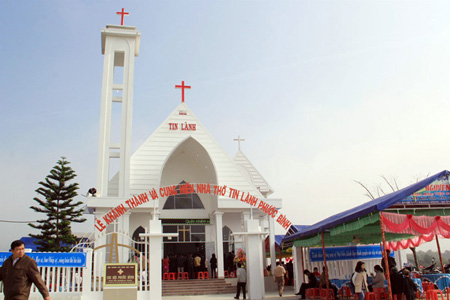The Central Highlands covers the present-day provinces of Dac Lac, Dac Nong, Lam Dong, Gia Lai, Kon Tum, Binh Phuoc and the highlands of the Central coastal provinces. It is the habitat of more than twenty ethnic minorities with two language groups...
The Central Highlands covers the present-day provinces of Dac Lac, Dac Nong, Lam Dong, Gia Lai, Kon Tum, Binh Phuoc and the highlands of the Central coastal provinces. It is the habitat of more than twenty ethnic minorities with two language groups, Mon-Kho me (spoken by the Kho me, Ba-na, Xo-dang,Co-ho, Hre, M'nong, Stieng, Bru Van Kieu, Ko-tu, Gie-trieng, Ma, Co, Ta-oi, Cho-ro, Brau, O-du, Ro-mam and others) and Ma Lai-Da Dao (spoken by the Cham, Chu-ru, E-de, Gia-rai and Ra-glai). In 2005, it was estimated that the population of ethnic minorities in the Central Highlands was three million. The ethnic minorities with sizeable populations include the Gia-rai (317,557 people), E-de (270,348 people), Ba-na (174,456 people) and Xo- dang (127,148 people). Recently, the settlement of some ethnic minorities from the Northern Highlands boosted the number of ethnic minorities in the Central Highlands to more than forty.
Before the appearance of such religions as Catholicism, Protestantism, Buddhism and Caodaism in the Central Highlands, the ethnic minorities here mainly practiced polytheism and believed that everything had a soul. This belief was inherent within a great number of traditional festivals.
In 1926, Parson A. H. Jackson from the CMA went to the Central Highlands to seek opportunities for Protestant evangelization. Three years later, he and his wife arrived in Da Lat where they simultaneously learned the vernaculars and carried out missionary work. In 1931, Hasol (Ha San in Vietnamese), who had taught Parson A. H. Jackson and his wife the Co-ho language through French, was the first ethnic minority person in the Central Highlands to follow Protestantism. He was later qualified as a pastor and became an influential figure to Protestant believers in the region.
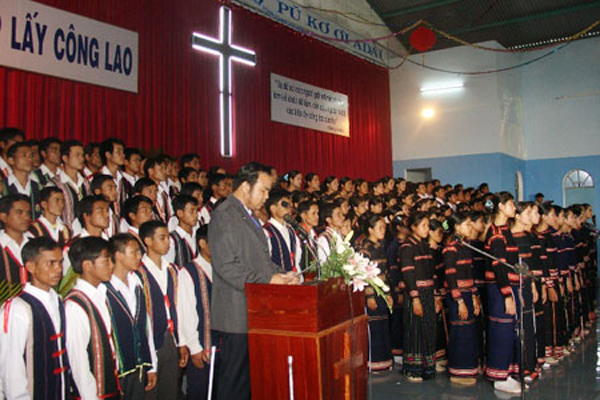
From the 1940s onward, the evangelization of Protestantism in the Central Highlands was implemented on a larger scale with the participation of both organizations: the CMA and the Vietnam General Confederation of Evangelical Churches. Particularly, the nineteenth Church Congress (1942) adopted a resolution that support to the evangelization of Protestantism among the ethnic minorities in the Central Highlands.
During the 1930s and 1940s, most of the pastors and missionaries from the Vietnam General Confederation of Evangelical Churches took turns carrying out missionary work in the Central Highlands. Specifically, Le Van Que, Nguyen Van Tam, Trinh An Meo and Pham Van Nam carried out missionary work in the areas of the Co-ho and Cho-ro in Da Lat and Di Linh in 1930, 1931, 1933 and 1941 respectively. Nguyen Dinh Nhon, Nguyen Van Lich and Tran Van Tung did their tasks in the Cham area in Phan RI in 1934, 1935 and 1940 respectively. Ong Van Trung and Le Van Tram carried out missionary work among the Cho-ro in Xuan Loc in 1934 and 1938 respectively. Pham Xuan Tin, Bui Tan Loc and Nguyen Hau Nhuong went to the areas of the E-de, Gia-rai and M'nong in Buon Me Thuot to do their tasks in 1937, 1939 and 1941 respectively. In 1933, Ngo Van Lai carried out missionary work in the Bru area in Khe Sanh. In 1940, Nguyen Thuan evangelized Protestantism in the Pa-co area in Thua Thien. In 1941, Kieu Toan carried out missionary work in the Co-tu area in Quang Nam.
Together with pastors and missionaries from the Vietnam General Confederation of Evangelical Churches, those from the CMA also promoted missionary work in the Central Highlands. In 1929, Pastor H. A. Jackson and his wife arrived in the Co-ho area. In 1931, Pastor C. E. Travis arrived in the Cham area. Pastor O. Nyth and his wife arrived in the areas of the E-de, M'nong and Gia-rai in 1932. Pastor G. H. Smith and his wife also went to these areas in 1934. In 1931, Pastor I. R. Stebbins and his wife arrived in the Pa-co area. Pastor G. c. Ferry and his wife arrived in the Cho-ro area in 1934. After World War II, more clergymen from the CMA arrived in the Central Highlands, including Pastor N. R. Ziemer and his wife, Pastor G. E. Irwin and his wife, and Pastor T. G. Mangham and his wife.
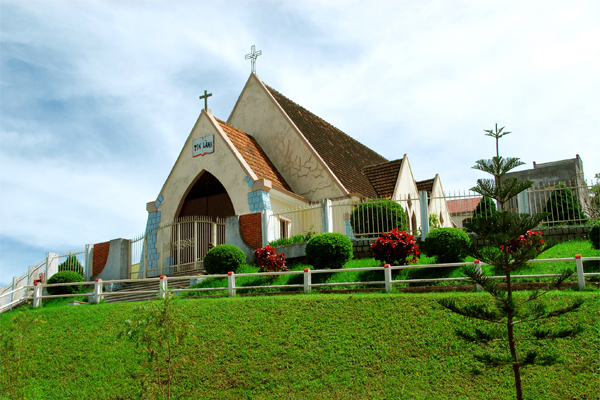
The spread of Protestantism in the Central Highlands was at first unsuccessful due to the local people's reaction to the differences in belief and lifestyle, as well as the French authorities' obstruction. Actually, Pastor H. A. Jackson had alluded to the interference of the French government when he was carrying out missionary work in Da Lat. The local people were prohibited from following Protestantism. The French eventually allowed Protestant evangelization, but they required that each evangelical program should be approved by the local government. The language barrier posed another obstruction for Protestant evangelization. However, it must be admitted that the pastors and missionaries from the CMA and the Vietnam General Confederation of Evangelical Churches were extremely diligent and were soon able to learn the native language and customs of their new homeland. Translating the Bible into the ethnic minority languages also helped to overcome the language barrier. In 1932, Ngo Van Lai started to translate basic Bible passages and the Ten Commandments into the Bru language. Afterwards, H. A. Jackson, Nguyen Dinh Nhon, Trinh An Meo and Nguyen Van Tam translated the Gospel of Mark into the Co - ho language. The Gospel of Mark was simultaneously translated into the E-de language by G. H. Smith. In 1950, Hasol translated the Book of Galatians into the Co-ho language, which was later used as the teaching material for students at the Da Lat Bible School. Later, Hasol and Pham Van Nam continued to translate the Book of Timothy I and II. In 1951-1952, G. Irwin and K'Sac completed the translation of the Book of Genesis, the first book of the Bible and the Old Testament. From 1953 onward, missionaries in Da Lat translated the remaining parts of the New Testament. In 1955, H. A. Jackson, Pham Van Nam and Hasol completed the Co-ho translation of the Gospel of Mark. (This was actually a revised version.) All of these translations were printed in great numbers by the Protestant Press in Da Lat (established in 1950) and given free to Protestant followers.
In 1942, before the Nineteenth Church Congress of the Vietnam General Confederation of Evangelical Churches took place, pastors who were carrying out missionary work in the Central Highlands participated in a meeting chaired by H. A. Jackson. All the participants agreed to establish a missionary corps named Foreign Religious Mission. It laid the foundation for a Protestant organization in the Central Highlands later.
By 1945, there were eleven ethnic minority groups in the Central Highlands represented among Protestant-converted people, such as the Co-ho (1929), Cham (1931), Hre (1933), Bru (1933), Cho-ro (1934), E-de (1934), Gia-rai (1940), M'nong (1940), Co-tu (1941) and Ba-na (1941). Also by this time, the total number of Protestant followers in the Central Highlands amounted to nearly one thousand. For example, there were 200 Protestant followers among the Cham, 150 among the Co-ho, 70 among the Cho-ro, 35 among the M'nong and 30 among the Ba-na.
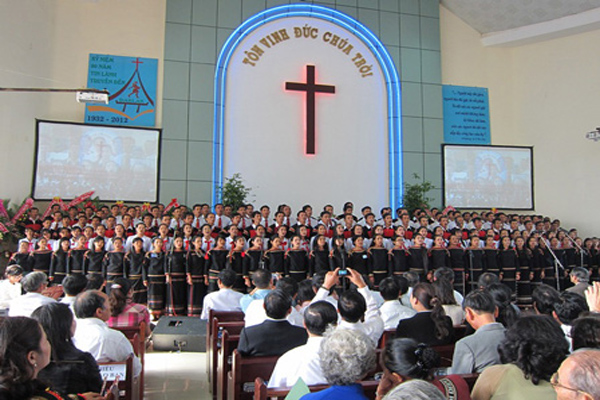
During 1945-1954, the situations and conditions of evangelization among the ethnic minorities both in the North and the South were not more favorable than those in the previous period, but the missionary work was increased, especially in the Central Highlands. During this time, the majority of missionary graduates from the Da Nang Bible School were sent to the Central Highlands. The Vietnam Protestant Church in general and the Protestant organization in the Central Highlands in particular were strengthened, which had positive effects on the result of evangelization. In 1949, the Foreign Religious Mission held its second meeting in Buon Me Thuot. In this meeting, the Foreign Religious Mission was renamed Vietnam Evangelical Mission, which was later acknowledged by the Foreign Missionary Council under the CMA and the Vietnam Protestant Church. In 1953, the Vietnam Evangelical Mission held its congress in Da Lat to approve its regulations of operation and elected its managing committee. This managing committee included five members with Pastor Pham Xuan Tin as the Chairman and Pastor Pham Van Nam as the Vice Chairman.
In 1951, the clergymen of CMA established the Highland Region, in which Pastor Hasol served as the Chairman, Pastor Yno Bya as the Deputy and Ysuai Eban as the Treasurer. Pastor Mangham was invited to act as an advisor to the Managing Committee of the Highland Region. It was not until 1959 when the Twenty-seventh Church Congress was held in Vinh Long that the Highland Region was officially recognized as part of the Vietnam Protestant Church.
In 1947, the Buon Me Thuot Bible School was built on the foundation of the Bible classes opened by Pastor G. H. Smith and his wife for the Ba-na during 1933-1937. The number of students increased from 44 in 1949 to 62 in 1952. Also in 1947, the Da Lat Bible School was opened on the foundation of the Bible classes held by Pastor H. A. Jackson and his wife since 1932. This school offered both regular programs and correspondence classes. The number of students increased each year, from 45 in 1949 to 65 in 1950 and 104 in 1951.
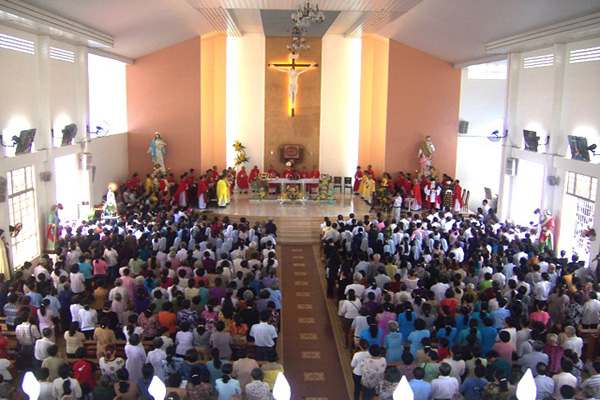
From its bases founded prior to the World War II, in the mid 1950s, Protestantism was further developed in the Central Highlands. The number of ethnic minorities in the Central Highlands represented among Protestant-converted people in the 1950s surpassed that in 1945 (eleven). The increase included the Stieng (1951), Ra-glai (1951), Chru (1952) and Ma (1953). By this time, there were nearly 6,000 Protestant followers, 70 sects, and 47 pastors and missionaries. In 1955, the ethnic minority groups with the greatest numbers of Protestant followers included the Co-ho (4,100), E-de (1,100) and Ra-glai (400).
The evangelization of Protestantism among the ethnic minorities was at a peak from 1954-1975 during the American invasion of Vietnam. Missionary work received much support from the CMA and the Vietnam General Confederation of Evangelical Churches. Skilful and experienced missionaries, as well as favorable material conditions and modern missionary equipment, were sent to Vietnam. In June 1962, in the Thirtieth Church Congress held in Nha Trang, the Vietnam General Confederation of Evangelical Churches established the Central Missionary Committee to replace the Vietnam Evangelical Mission, which had dissolved in 1959. The Committee was assigned to manage the missionary work in the ethnic minority areas.
Since its establishment, the Committee continuously sent pastors and missionaries to the Central Highlands. They included Nguyen Anh Tai to the Da Lat Bible School, Pham Van Minh and Mai Dong Hien to the Chru area in Don Duong, Huynh Van Kiem to the Cham area in Phan Rang, Nguyen Dinh Chuong to the Ra-glai area in Phuoc Duc, Dang Trung Thanh to the Stieng area in Phuoc Long, Dang Van Trung to the Ba-na area, and Phan Van Xuyen to the Ma area. In 1972, after the promulgation of the regulations on female missionaries, the Committee dispatched several female missionaries to Pleiku.
In terms of organization, in 1969, the Vietnam General Confederation of Evangelical Churches divided the Highland Region into the Central Highland Region (from Quang Tri to Quang Duc with Buon Me Thuot as the center) and the South Highland Region (from Da Lat to Binh Long, Phuoc Long and Xuan Loc with Da Lat as the center).
In 1973, the Thirty-ninth Church Congress developed the idea raised by the missionary Truong Van Tot and founded the Ethnic Mission of the South Highland Region under the leadership of Pastor A Sao Ha as the Chairman and Pastor Ha Tang as the Vice Chairman and Secretary.
However, since the late 1960s, the missionary activities of the Vietnam General Confederation of Evangelical Churches in the ethnic minority areas gradually decreased while the role of the CMA clergymen increased. During this time, most of the missionary activities in the Centra] Highland Region and South Highland Region were directly managed by clergymen from the CMA. Also, the numbers of clergymen in these regions were higher than those in anywhere else. In 1974, each area of these regions had thirty-three clergymen from the CMA. They included, for example, Harold s. Duttan and his wife, David T. Health and his wife, Wesley Scholander and his wife, Linda, Helen E. Evans and Carol Ann Steckel in Da Lat; Robert F. Green and his wife, Norman Johnson and his wife, Richard L. Philippe and his wife, Kenneth A. Swain and his wife, and Mary Andrea in Buon Me Thuot; Bruce H. Downe and his wife, J. Cail Heming and his wife, John w. Hall and his wife, Sharon Allwine and Drawn A. Dects in Pleiku; Keith E. Kayeer and his wife in Phan Rang; Richard I. Drummond and his wife in Quang Ngai; and Chester E. Travis and his wife and Johan B. Companjen in Quy Nhon.
The evangelization of Protestantism in the Central Highlands in the period 1954-1975 was also supported by social charity organizations of the international Protestantism and the American government through the United States Agency for International Development (USAID) with a variety of aids, from medication to food, necessities, children's clothing, and building and agricultural materials. Professional missionary organizations such as the Summer Institute of Linguistics (SIL) and the Bible Society (BS) also appeared in the Central Highlands.
After forty-four years of evangelization in the Central Highlands, by 1973, Protestantism had attracted 57,786 followers from sixteen ethnic minority groups with 216 sects, 193 pastors and missionaries, 50 missionary students, 2 Bible schools (Buon Me Thuot and Da Lat), 8 missionary centers (Da Lat, Buon Me Thuot, Pleiku, Bao Loc, Phuoc Long, Quang Duc, Don Duong and Phan Rang) and 3 medical centers (including 1 leprosy hospital and 2 general hospitals).
During 1954-1975, the evangelization of Protestantism in the Central Highlands involved not only the CMA and the Vietnam General Confederation of Evangelical Churches but also some other Protestant organizations such as the Christian Mission, Mennonites and Quakers.
For many economic, cultural and social reasons, the number of Protestant believers in the Central Highlands still increased rapidly after the liberation of the South. Protestantism was spread throughout the region. In many areas, people who used to practice traditional religions began to follow Protestantism. According to the statistics of the Vietnam Government Committee for Religious Affairs, by April 2006, there were 404,635 Protestant believers in provinces of the Central Highlands, Binh Phuoc Province and Central coastal provinces. Among them, 293,208 Protestant followers were members of the Vietnam General Confederation of Evangelical Churches (Southern Region).
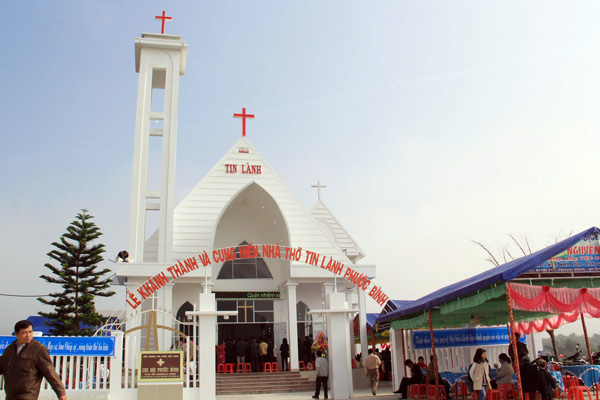
In general, the ethnic minority groups who follow Protestantism in the Central Highlands, Binh Phuoc Province and Central coastal areas, including the converted before 1975, have already built up quite a deep faith in the religion. They are still holding religious activities either at home or in chapels, and are considered a stable religious entity.i
Since 2001, localities have gradually normalized Protestant activities. This process was started with the participation of fifty-six pastors and missionaries from the Central Highlands in the Forty-third Church Congress in February 2001. It was then followed by a series of events. For example, a corps of twenty-four exemplary pastors and missionaries from the Central Highlands visited the North and Vietnam and were cordially received by the former Chairman of the National Assembly Nguyen Van An. The representative committees and representatives of the Vietnam General Confederation of Evangelical Churches (Southern Region) were set up in the provinces of Gia Lai, Lam Dong, Dac Lac, Kon Tum and Binh Phuoc. Twenty postulants from the ethnic minorities were elected to attend the first and second courses at the Ho Chi Minh City Theological Bible Seminary, hour theological refresher courses were held in Gia Lai, Dac Lac, Dac Nong and Binh Phuoc in 2006 with the participation of 180 students. The Bible was published in ethnic minority languages such as Ba-na, E-de and Gia-rai.
By December 2008, a total of 141 Protestant sects had been officially acknowledged; nearly 1,156 village-based groups, most of which were under the Vietnam General Confederation of Evangelical Churches (Southern Region) and the Vietnam Christian Mission, had registered with the local authorities for normal religious activities according to the State law. Generally, the activities of Protestantism in the Central Highlands and Binh Phuoc Province have gradually been stabilized.

